- Home
- Best Pet for Me
- Tortoises
Tortoises
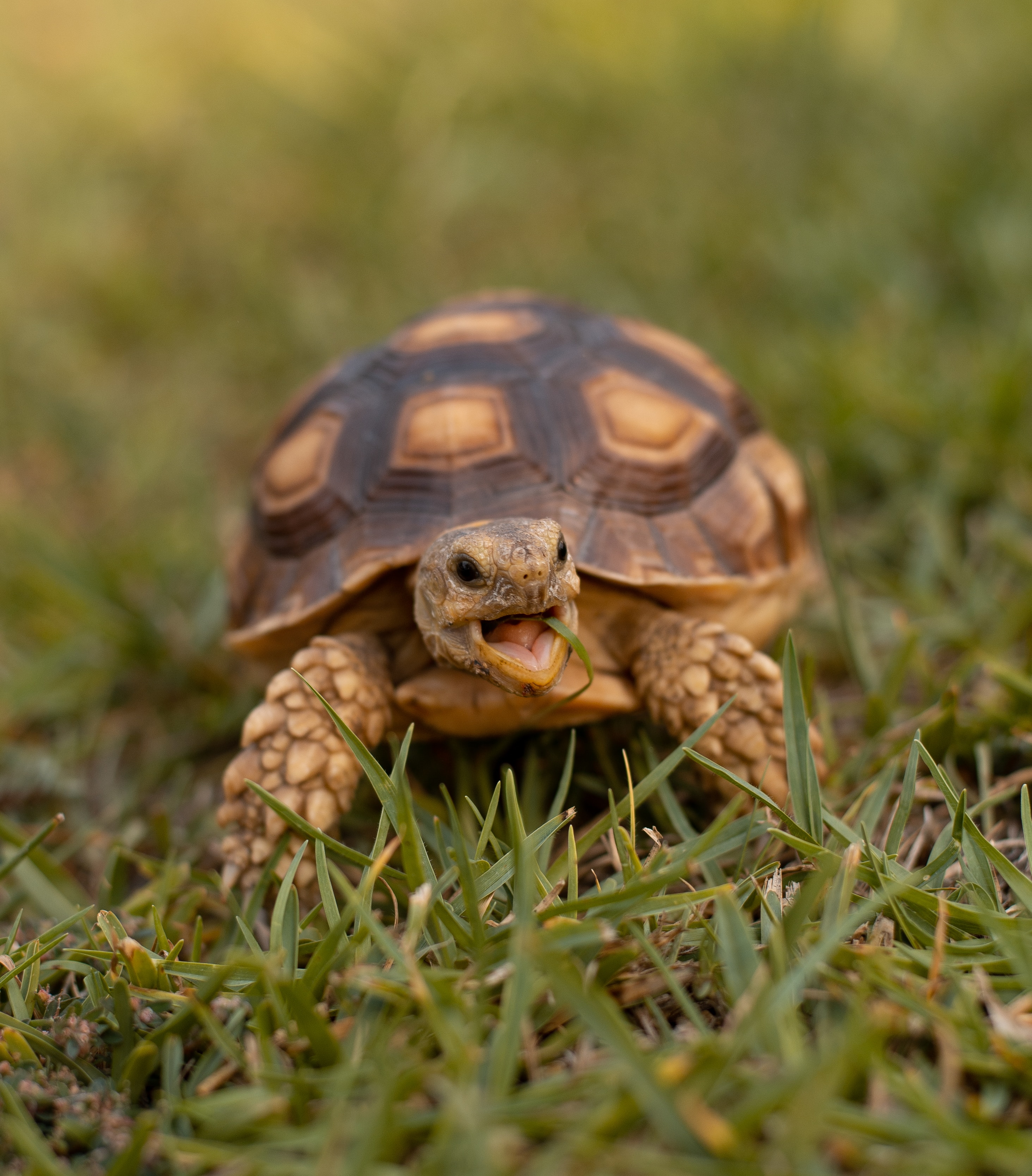 Photo by David Cadenas https://unsplash.com/photos/VFTq3si9YVw
Photo by David Cadenas https://unsplash.com/photos/VFTq3si9YVwTortoises live on the land, they don't go into the water. It is turtles who go into the water and spend a lot of time there (although some turtles spend a lot of time on land). Tortoises might bathe in the water or walk through it, but they are not water animals.
Actually, tortoises are in the turtle family, so all tortoises are turtles, but not all turtles are tortoises. The actual animal kingdom classification differences between tortoises and turtles have to do with what they eat and their anatomy. Tortoises are vegetarians, turtles are omnivores. Turtles have stumpy feet, like an elephant. Turtles have webbed feet and sometimes even flippers. Tortoises have a domes shell and turtles tend to have a flatter shell.
Tortoises can be great pets. They don’t have fur so they are hypoallergenic and they are not dangerous.
There are many species of tortoises that are kept as pets. They vary in length of life, size, the temperature needed for their cage, and other characteristics. Some species of tortoises are banned in some areas, so definitely check what the laws are in your area before you adopt a tortoise.
I have had a pet tortoise for many years. Tucker was a pet at the preschool my kids went to. He kept getting bigger and bigger and was very cramped in the enclosure the school had him in. They would let him out to run around the classroom or the outdoor space sometimes, but the teacher was concerned about salmonella. So I took him home.
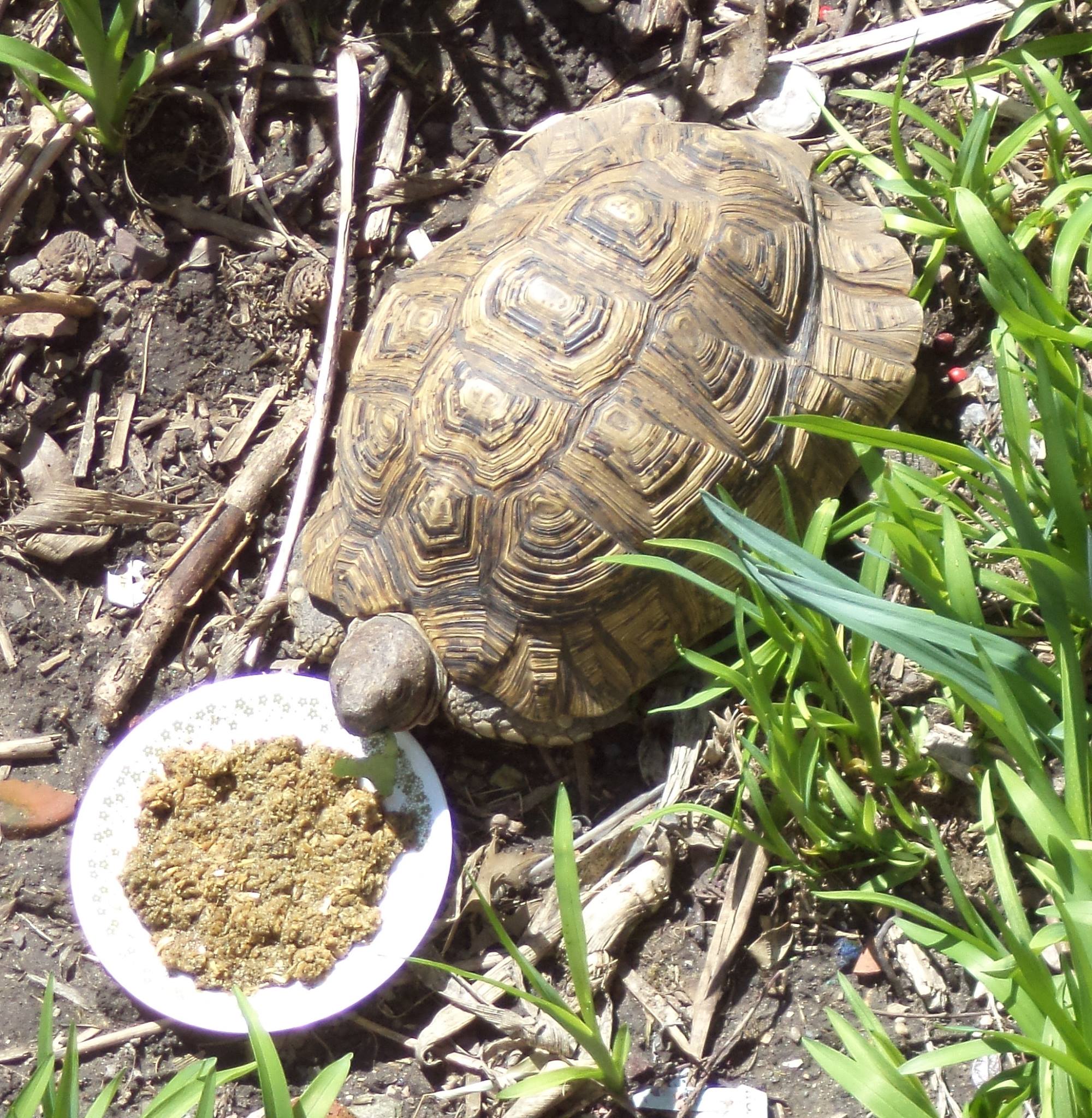
I don’t know Tucker’s exact species, I think he was a Leopard Tortoise. I wasn’t that informed of tortoise care when I had him. I just followed the directions I got from the preschool. We have a small fenced-in backyard so we let him loose there, along with the school’s pet rabbit that they didn’t want anymore. He mostly ate the weeds and other vegetation that grew in our backyard. I bought him tortoise pellets but he didn’t seem to like them. Sometimes he would go to the fence and my neighbors would give him carrots.
I put him in the basement to hibernate every year. That is a controversial practice and I am not sure if I would do that again if I had another tortoise. It worked for us for several year, but one year he didn’t make it through and he never woke up in the spring.
I’ll be talking about proper care for tortoises during the rest of this article. Figure out what kind of tortoise you have and create an environment and life that fits them well. You’ll have many years of a great pet. Tortoises can live for over 50 years. If you get one as a rescue, your tortoise may already be quite old, but they live so long, you will still have time to spend with your pet.
They won’t bite, but tortoises may carry bacteria and make you sick.
Like People?
They don’t like handling much and they are heavy when they get big. Some tortoises might bite if they are really stressed out by handling.
Tucker would come to me when I brought him food. It was really fun to watch him turtle around in the backyard. When we had foster dogs, they were fascinated by this moving rock!
If you approach your tortoise head-on, you may be able to pet their head, cheeks, and chin. They also can feel their shell you can pet their shell as well.
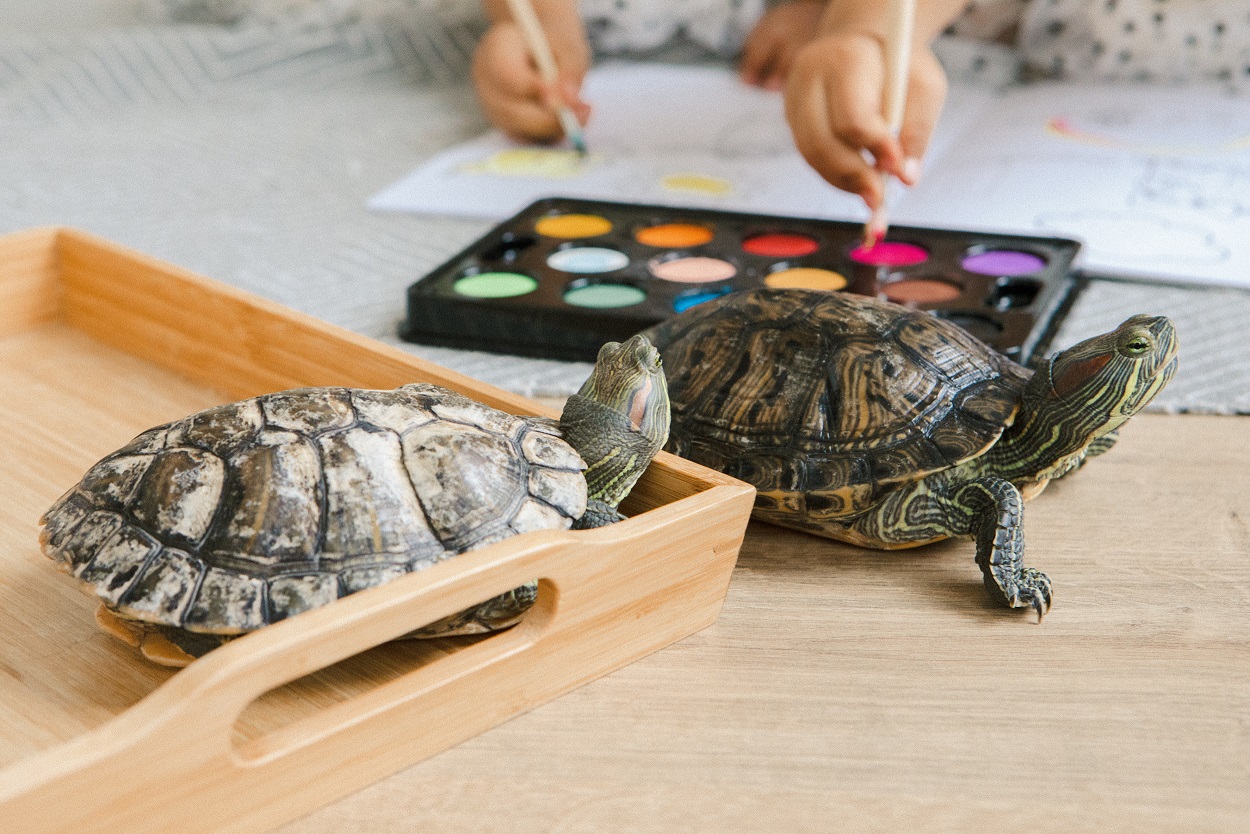 Photo by EKATERINA BOLOVTSOVA: https://www.pexels.com/photo/two-turtles-looking-at-unrecognizable-children-5263884/
Photo by EKATERINA BOLOVTSOVA: https://www.pexels.com/photo/two-turtles-looking-at-unrecognizable-children-5263884/Sleep
In general, tortoises sleep at night and are active during the day.
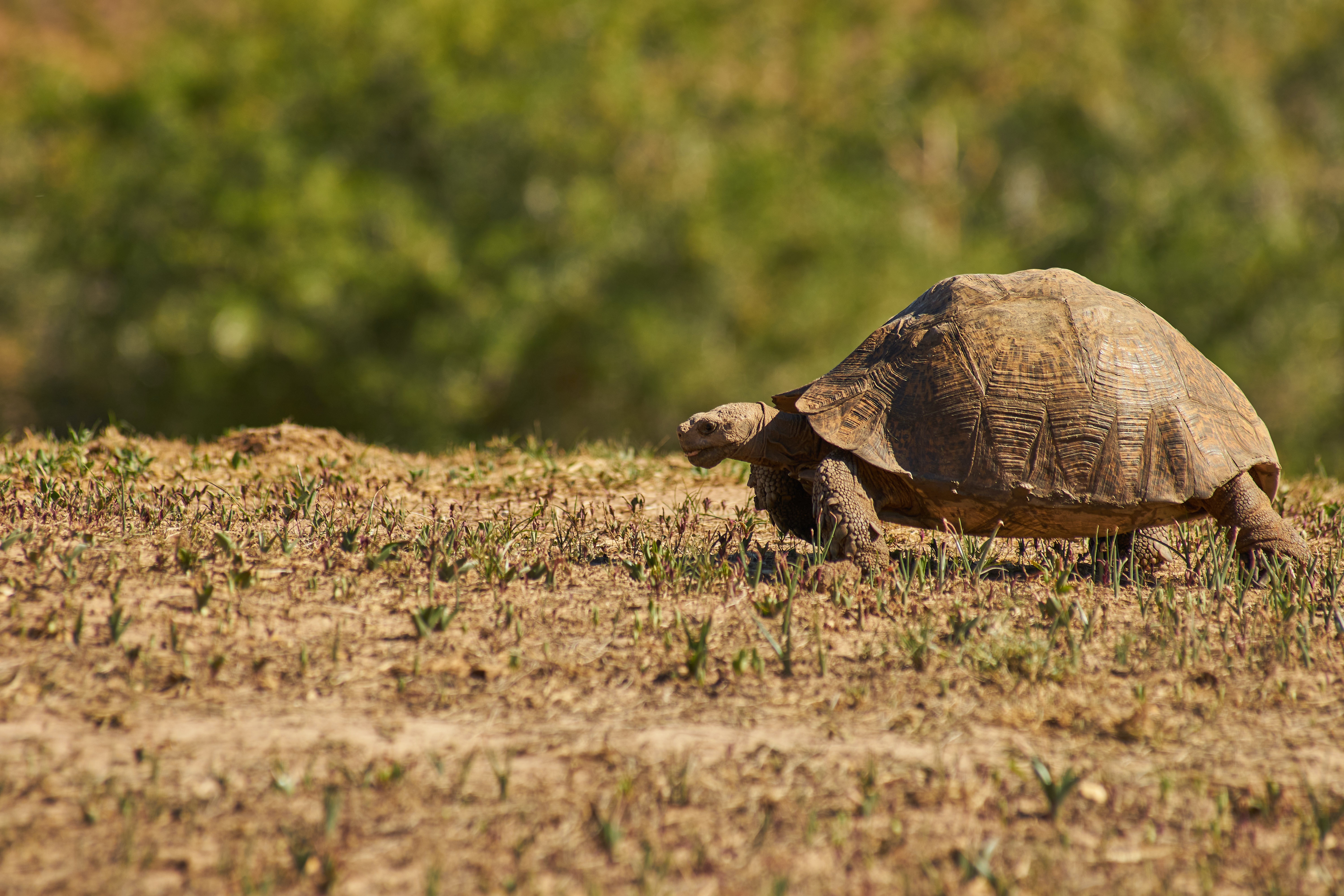 photo by Wolfgang Hasselmann https://unsplash.com/photos/mBccivEQvlk
photo by Wolfgang Hasselmann https://unsplash.com/photos/mBccivEQvlkSize
Here is a list of some common tortoise pet species and how big they are. They range from the tiny Egyptian Tortoise and the flat Pancake Tortoise to the very large Leopard Tortoise and Sulcata Tortoise.
Egyptian Tortoise
3-4 inches
Greek Tortoise
8-11 inches
Herman’s Tortoise
6-10 inches
Indian Star Tortoise
7-12 inches
Leopard Tortoise
16-28 inches
Pancake Tortoise
7 inches
Red-Footed Tortoise
12-16 inches
Russian Tortoise
8-10 inches
Sulcata Tortise
25-30 inches
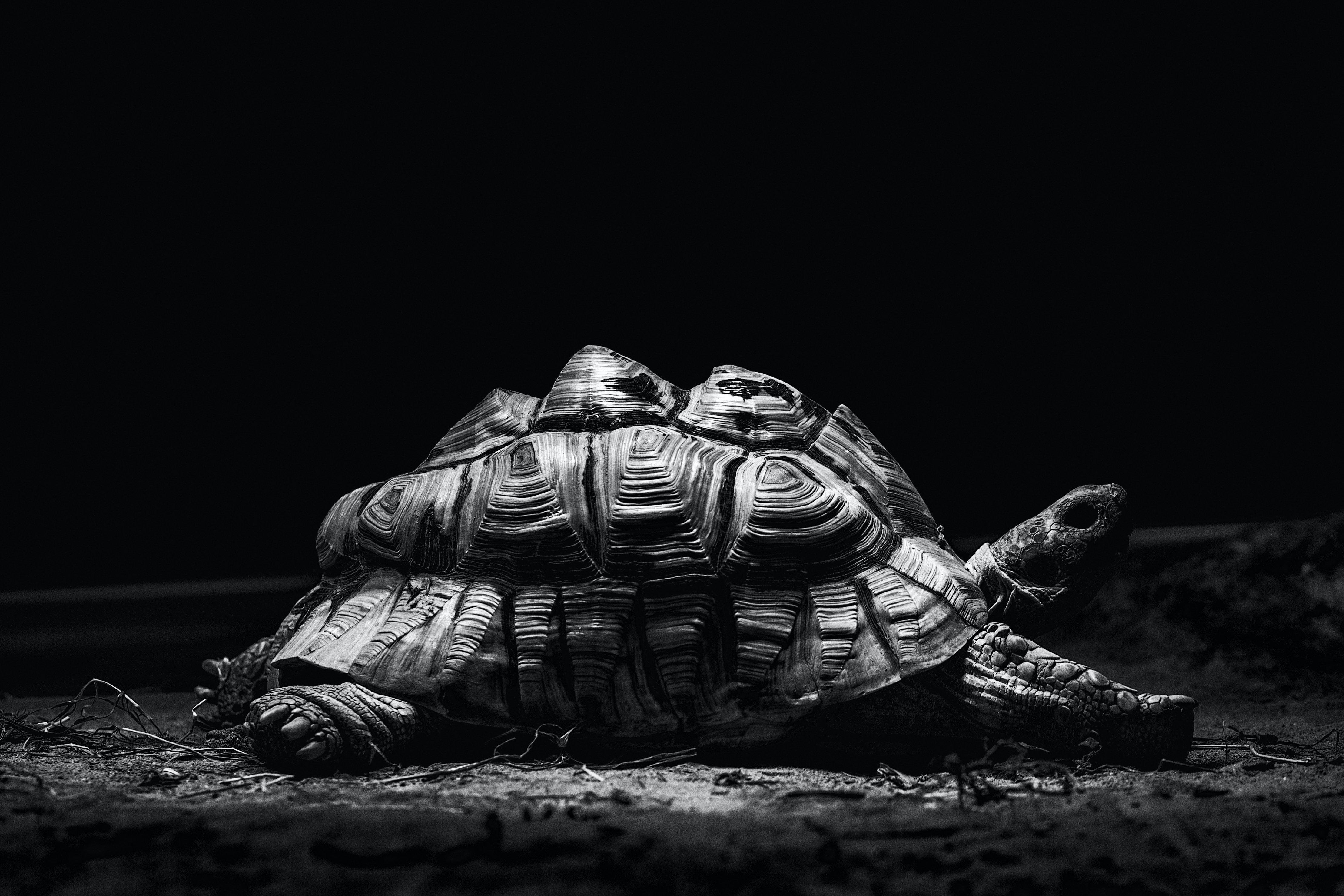 photo by Karl Ibri https://unsplash.com/photos/CQqZ2BWeoAU
photo by Karl Ibri https://unsplash.com/photos/CQqZ2BWeoAUTemperature and Humidity
Like most reptiles, tortoises like to have a basking place, a warm end of the cage and a cool end of their enclosure.
Egyptian Tortoise
88-90 degrees on the warm side to as low as 63 degrees on the cool side. Humidity should be 20-30%.
Greek Tortoise
The warm side should be between 75 and 90 degrees F, slightly higher for the basking area. The cool side can go down to 70 degrees F, or even 65 degrees F. Humidity should be between 40-60%.
Herman’s Tortoise
The warm part should be 80-85 degrees F with a basking area of up to 95 degrees F, and the cool part can be 65-70 degrees. Humidity should be at least 25%.
Indian Star Tortoise
Basking area of up to 95 degrees F and a cool area of no lower than the mid to low 70s. They like humid air so their humidity can go up to 80%.
Leopard Tortoise
Basking area of up to 95 degrees F and a cool area of no lower than the mid to low 70s. They like humid air so their humidity should be 40-60%.
Pancake Tortoise
Basking area up to 100 degrees F and a cool area down to 75 degrees F with humidity between 50-60% during the day and up to 80% at night.
Red-Footed Tortoise
Basking area of 90-95 degrees and the cool area can be as low as 60 degrees F. The humidity should be between 60-75%.
Russian Tortoise
Basking area of 90-100 degrees and the cool area can be as low as 70 degrees F. The humidity should be between 40-50%.
Sulcata Tortoise
Basking area of 90-100 degrees and the cool area can be as low as 85 degrees F, or in the 70s at night. The humidity should be between 40-60% during the day and up to 80% at night.
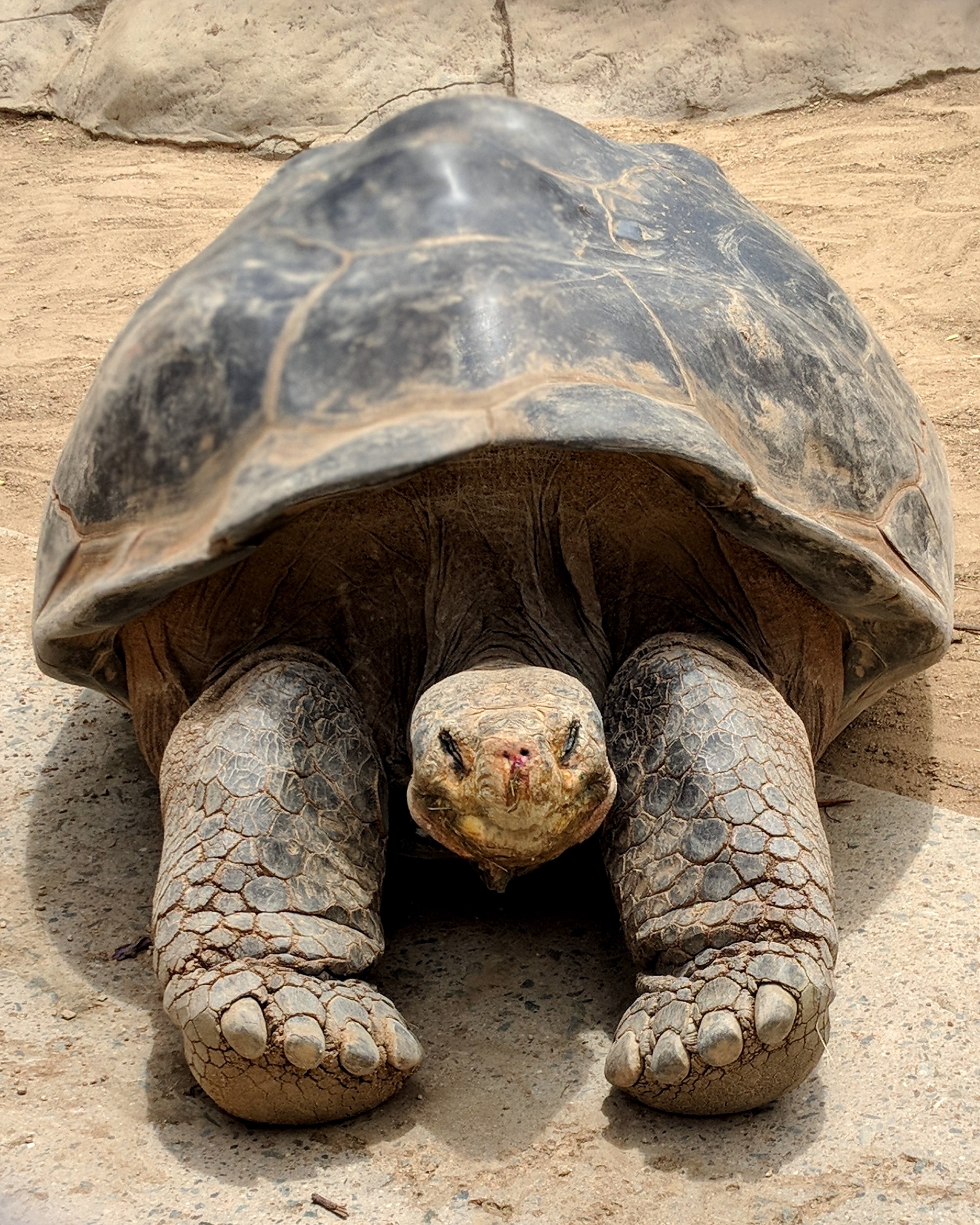 photo by Francis Costa https://unsplash.com/photos/0IXe6PlJeYo
photo by Francis Costa https://unsplash.com/photos/0IXe6PlJeYoHabitat
Tortoises tend to be solitary in the wild so they are fine being an only pet. Like with many animals, two male tortoises together may fight over territory, so if you have two males, you should have lots of space. If you have a male and female together, you will probably have many baby tortoises soon, so be careful about that.
Tortoises need UV lighting when they are kept inside to help them manufacture vitamin D. Vitamin D deficiency is a serious problem for tortoises.
Some tortoises will do well kept outside. Most of them really do need a lot of space to roam around in, so, for many tortoises, being an outdoor pet is great, as long as they can be kept safe.
Cage sizes are the minimum you should provide for your tortoise. A general rule for the size of the enclosure is at least 10X the length of the adult tortoise by 5 x the length of the adult tortoise. And usually at least 2 feet high. If you can give your pet a larger enclosure and give them time outside their cage to roam around, that is ideal. Plants, whether live or artificial will make a nice decoration for your tortoise, and provide them with rocks, logs, or reptile hiding places. If you have live plants in your habitat, make sure they are not toxic for your tortoise to eat.
The habitats should be spot-cleaned daily and thoroughly cleaned regularly.
Egyptian Tortoise
They are small so they don’t necessarily need a lot of space, but the bigger the enclosure they have, the better they will like it. The habitat should be at least 2 feet by 2 feet by 2 feet. They don’t need a lot of humidity, so you can use bedding that doesn’t stay moist. Sand, soil, and beech wood chips are good bedding materials.
Greek Tortoise
The cage should be at least 3 feet by 6 feet and 18 inches high. Mulch, aspen shavings, or dirt make good bedding but be sure the tortoise's food is on a plate so they don’t accidentally eat the bedding.
Herman’s Tortoise
Soils, sand, or cypress bark is a good substrate. These tortoises like to dig, so the bedding should be a couple of inches deep.
Indian Star Tortoise
They don’t need a lot of height in their cage, but they do need space to roam around in. At least provide them with a 50-55 gallon tank. Peat moss or coconut fiber will help the humidity level of the cage. Indian Star Tortoises may like to dig shallow dens.
Leopard Tortoise
They don’t climb or dig that much, but they do need a lot of space. Their habitat should be at least 10 feet by 10 feet and 2 feet high. They should have soil on the bottom of their cage.
Pancake Tortoise
Pancake tortoises like to climb so make sure the cage is at least 2 feet high. A length of 6 feet and width of 3 feet would be a good size for them. The cage should be lined with soil or sand.
Red-Footed Tortoise
The cage should be at least 6 feet by four feet and well-decorated with rocks and wood. The floor should be cypress mulch, orchid bark, or peat moss.
Russian Tortoise
The cage should be at least 5 square feet with a mixture of solid, hay, pebbles, and sand on the bottom.
Sulcata Tortoise
These large tortoises need a lot of space. If you have a backyard, a large pen for them would be great. They like to climb and burrow. They would need a really large indoor cage with 6-12 inches of soil and/or sand. They love to explore, so you would need lots of space and decorations.
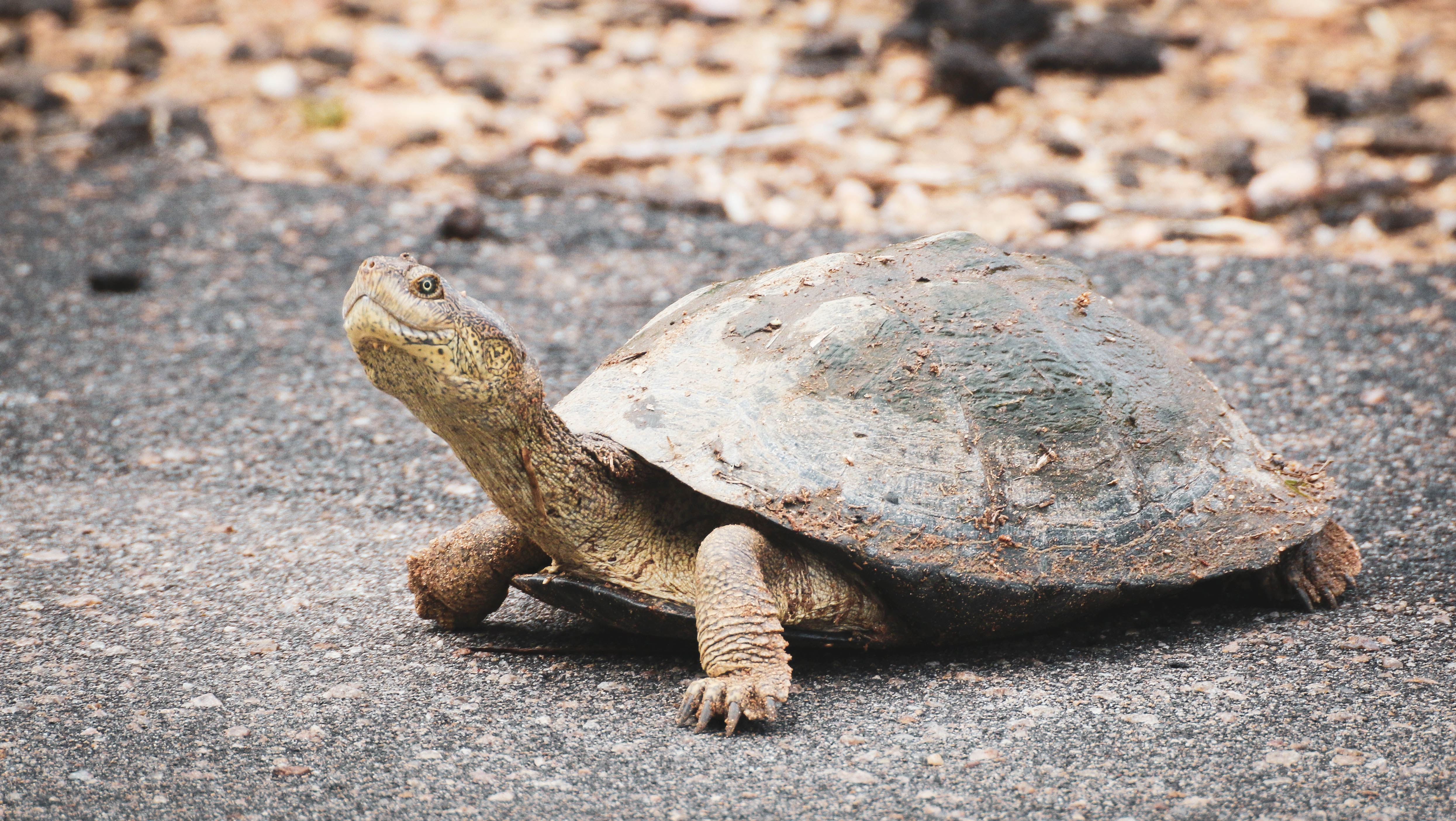 photo by Glen Carrie https://unsplash.com/photos/FCrzvzawGCQ
photo by Glen Carrie https://unsplash.com/photos/FCrzvzawGCQDiet
Tortoises need mostly dark leafy greens. Some greens, such as spinach, rhubarb, and parsley contain oxalic acid which can cause kidney stones in a tortoise, do be careful of what greens you feed them. You should supplement their diet with occasional fruit, hay, and turtle pellets from the pet store.
They may not drink a lot, but be sure your tortoise has access to shallow dishes of clean fresh water. They should be able to walk into the bowl and drink if they want to.
Lifespan and Health
Common health issues include respiratory problems, vitamin D deficiency, parasites, and viruses
Egyptian Tortoise
70-100 years
Greek Tortoise
50 years or more
Herman’s Tortoise
75 years or more
Indian Star Tortoise
Commonly live about 30-50 years, but may live longer.
Leopard Tortoise
80-100 years
Pancake Tortoise
35 years or more
Red-Footed Tortoise
50 years or more
Russian Tortoise
Over 40 years
Sulcata Tortoise
70 years or more






New! Comments
Have your say about what you just read! Leave me a comment in the box below.